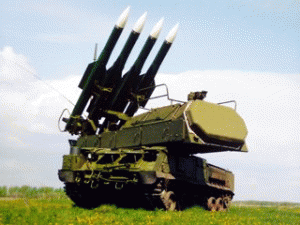Reprinted from Consortium News
One year ago, the world experienced what could become the Tonkin Gulf incident of World War III, the shoot-down of Malaysia Airlines Flight 17 over eastern Ukraine. As with the dubious naval clash off the coast of North Vietnam in 1964, which helped launch the Vietnam War, U.S. officials quickly seized on the MH-17 crash for its emotional and propaganda appeal -- and used it to ratchet up tensions against Russia.
Shocked at the thought of 298 innocent people plunging to their deaths from 33,000 feet last July 17, the world recoiled in horror, a fury that was then focused on Russian President Vladimir Putin. With Putin's face emblazoned on magazine covers, the European Union got in line behind the U.S.-backed coup regime in Ukraine and endorsed economic sanctions to punish Russia.
Raising world tensions even further, the Russians have made clear that they will not allow the ethnic Russian resistance to be annihilated, setting the stage for a potential escalation of hostilities and even a possible nuclear showdown between the United States and Russia.
But the propaganda linchpin to the West's extreme anger toward Russia remains the MH-17 shoot-down, which the United States and the West continue to pin on the Russian rebels -- and by extension -- Russia and Putin. The latest examples are media reports about the Dutch crash investigation suggesting that an anti-aircraft missile, allegedly involved in destroying MH-17, was fired from rebel-controlled territory.
Yet, the U.S. mainstream media remains stunningly disinterested in the "dog-not-barking" question of why the U.S. intelligence community has been so quiet about its MH-17 analysis since it released a sketchy report relying mostly on "social media" on July 22, 2014, just five days after the shoot-down. A source briefed by U.S. intelligence analysts told me that the reason for the intelligence community's silence is that more definitive analysis pointed to a rogue Ukrainian operation implicating one of the pro-regime oligarchs.
The source said that if this U.S. analysis were to see the light of day, the Ukrainian "narrative" that has supplied the international pressure on Russia would collapse. In other words, the Obama administration is giving a higher priority to keeping Putin on the defensive than to bringing the MH-17 killers to justice.
Like the Tonkin Gulf case, the evidence on the MH-17 case was shaky and contradictory from the start. But, in both cases, U.S. officials confidently pointed fingers at the "enemy." President Lyndon Johnson blamed North Vietnam in 1964 and Secretary of State John Kerry implicated ethnic Russian rebels and their backers in Moscow in 2014. In both cases, analysts in the U.S. intelligence community were less certain and even reached contrary conclusions once more evidence was available.
In both cases, those divergent assessments appear to have been suppressed so as not to interfere with what was regarded as a national security priority -- confronting "North Vietnamese aggression" in 1964 and "Russian aggression" in 2014. To put out the contrary information would have undermined the government's policy and damaged "credibility." So the facts -- or at least the conflicting judgments -- were hidden.
The Price of Silence
In the case of the Tonkin Gulf, it took years for the truth to finally emerge and -- in the meantime -- tens of thousands of U.S. soldiers and millions of Vietnamese had lost their lives. Yet, much of the reality was known soon after the Tonkin Gulf incident on Aug. 4, 1964.
Daniel Ellsberg, who in 1964 was a young Defense Department official, recounts -- in his 2002 book Secrets -- how the Tonkin Gulf falsehoods took shape, first with the panicked cables from a U.S. Navy captain relaying confused sonar readings and then with that false storyline presented to the American people.
As Ellsberg describes, President Johnson and Defense Secretary Robert McNamara announced retaliatory airstrikes on Aug. 4, 1964, telling "the American public that the North Vietnamese, for the second time in two days, had attacked U.S. warships on 'routine patrol in international waters'; that this was clearly a 'deliberate' pattern of 'naked aggression'; that the evidence for the second attack, like the first, was 'unequivocal'; that the attack had been 'unprovoked'; and that the United States, by responding in order to deter any repetition, intended no wider war."
Ellsberg wrote: "By midnight on the fourth, or within a day or two, I knew that each one of those assurances was false." Yet, the White House made no effort to clarify the false or misleading statements. The falsehoods were left standing for several years while Johnson sharply escalated the war by dispatching a half million soldiers to Vietnam.
In the MH-17 case, we saw something similar. Within three days of the July 17, 2014 crash, Secretary Kerry rushed onto all five Sunday talk shows with his rush to judgment, citing evidence provided by the Ukrainian government through social media. On NBC's "Meet the Press," David Gregory asked, "Are you bottom-lining here that Russia provided the weapon?"
Kerry: "There's a story today confirming that, but we have not within the Administration made a determination. But it's pretty clear when -- there's a build-up of extraordinary circumstantial evidence. I'm a former prosecutor. I've tried cases on circumstantial evidence; it's powerful here." [See Consortiumnews.com's "Kerry's Latest Reckless Rush to Judgment."]
(Note: You can view every article as one long page if you sign up as an Advocate Member, or higher).






